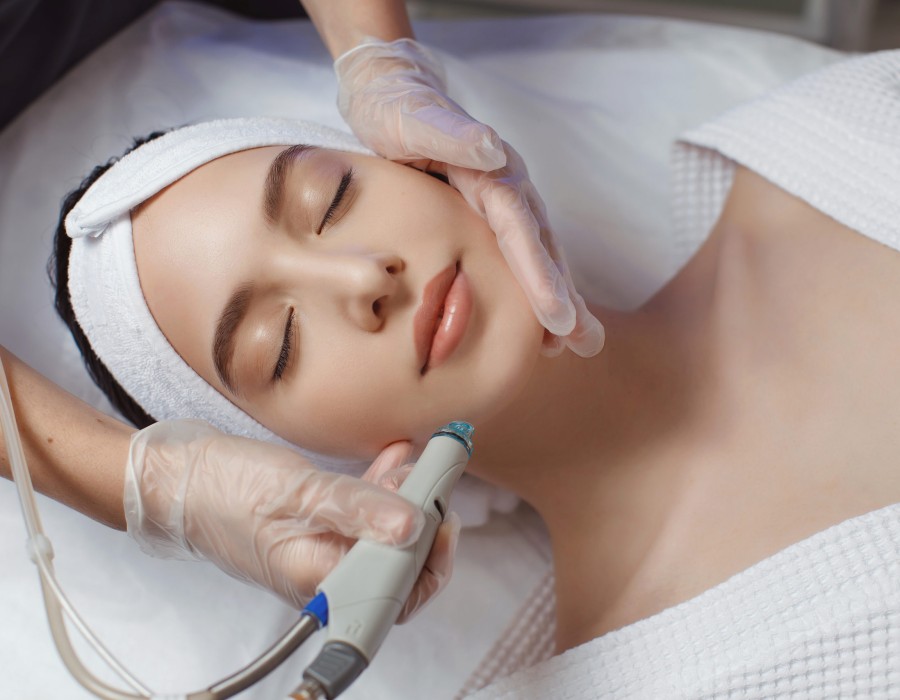HydraFacials are celebrated for their ability to rejuvenate and refresh the skin. However, some individuals might experience a concerning issue: Skin Looks Worse After Hydrafacial. This article will guide you through the steps to address and resolve this problem effectively.
Understanding Why Skin Looks Worse After HydraFacial
HydraFacials use a combination of cleansing, exfoliation, and hydration to improve skin appearance. Despite these benefits, it's not uncommon to experience initial worsening of skin condition. Understanding the causes behind this can help in managing and fixing the issue.
Common Reasons for Worsening Skin After HydraFacial:
- Increased Sensitivity: The HydraFacial treatment involves deep exfoliation and the application of active ingredients, which can temporarily increase skin sensitivity. This sensitivity may cause redness, irritation, or even acne-like breakouts in some individuals.
- Underlying Skin Conditions: Pre-existing skin conditions, such as rosacea or eczema, may exacerbate post-treatment redness or inflammation. The intense treatment can sometimes trigger flare-ups in these conditions.
- Improper Aftercare: Post-procedure care is crucial. Failure to follow aftercare instructions, such as avoiding sun exposure or using irritating skincare products, can worsen the appearance of your skin.
- Purging Process: Sometimes, the treatment can accelerate the skin’s natural process of purging impurities, leading to temporary breakouts. This is typically a short-term effect that resolves as the skin clears out.
Immediate Steps to Take When Skin Looks Worse After HydraFacial
If you find that your skin looks worse after HydraFacial, follow these immediate steps to help soothe and restore your skin:
- Cool Compresses: Apply cool compresses to your skin to reduce redness and inflammation. This helps in calming the skin and can provide instant relief.
- Hydrate Well: Keep your skin hydrated by using a gentle, non-comedogenic moisturizer. Hydration helps in repairing the skin barrier and alleviates dryness or flakiness.
- Avoid Irritants: Steer clear of products containing alcohol, retinoids, or acids that may irritate your sensitive skin. Opt for mild, soothing ingredients like chamomile or aloe vera.
- Sun Protection: Protect your skin from sun exposure by applying a broad-spectrum sunscreen with at least SPF 30. Sun exposure can worsen redness and sensitivity.
Long-Term Solutions to Improve Skin After HydraFacial
To ensure that your skin recovers well and appears healthier in the long run, consider the following strategies:
- Review Your Skincare Routine: Adjust your skincare routine to include gentle, hydrating products. Look for products designed for sensitive skin to avoid further irritation.
- Consult a Dermatologist: If your skin continues to look worse after HydraFacial, it may be beneficial to consult a dermatologist. They can provide personalized advice and treatments tailored to your skin type and concerns.
- Consider Alternative Treatments: If HydraFacial consistently leads to negative reactions, you might want to explore alternative treatments that better suit your skin's needs. Your dermatologist can recommend suitable options.
- Follow Post-Treatment Care Instructions: Adhere strictly to the post-treatment care instructions provided by your skincare professional. This includes avoiding excessive heat, sweating, and harsh skincare products.
Conclusion
While it can be disheartening to see that skin looks worse after HydraFacial, understanding the underlying causes and following the right steps can help you address and improve the situation. Immediate care combined with long-term strategies will guide you toward achieving the glowing, healthy skin you anticipated from your HydraFacial treatment.





Comments